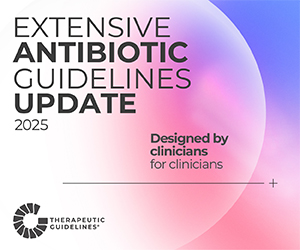Aggression and violence against frontline workers in hospital emergency departments (EDs) is on the rise with current strategies to manage the issue perceived as insufficient.
In-hospital assaults in Australia have increased by 60% in Victoria, 48% in Queensland, and 44% in New South Wales from 2015 to 2018, according to new research from Edith Cowan University (ECU).
This represents a continued and prevalent rise in aggressive behaviour against nursing staff. A 2017 survey conducted with members of the College of Emergency Nurses’ Australasia found that 87% of nurses reported experiencing patient-related violence.
A recent survey of Queensland’s health workers by the Australian Worker’s Union found that close to 70% of staff had either been assaulted or witnessed an assault in the workplace.
The ECU study held focus groups with medical doctors, nurses and health safety staff across five Perth EDs.
“Participants in our study in Perth were overwhelmingly telling us that the occurrence of violence is on the increase. It is not a matter of if, but when,” said ECU PhD candidate Mr Joshua Johnson.
Alarmingly but perhaps not unsurprisingly, study participants reported that violence had become more aggressive in nature.
“Over the last 20 or so years, it has progressed from verbal or occasional physical abuse, where someone might be throwing a cup at a frontline worker, to the assaults we’re seeing now,” said Mr Johnson.
Contributing factors to the increase in aggression and violence include drug and alcohol use, mental illness and psychiatric disorders. Understaffing and overcrowding in the triage area of the EDs, which result in longer wait times and communication barriers, also contributed.
Insufficient strategies
While several initiatives in place were in place in hospital EDs aimed to reduce the impact of violence or improve staff’s ability to cope with the violence, these initiatives were perceived to be ineffective.
“Some of the training that staff receive at hospitals to manage aggression and violence is great. These training sessions span over a few days and include both lecture-based material and role-play or hands-on techniques.
“However, other participants in our study reported that they only received two hours of training once every year, and that this training is only lecture-based.
“This training could also happen during very busy work periods, meaning that staff are unable to step away from their duties, or it takes place on days when staff are not at work, meaning they have to attend the training on their day off,” said Mr Johnson.
The study found large variation in the quality and frequency of training delivered in healthcare facilities.
There was a definite need for hospitals to focus on reducing barriers to accessing effective training, and a standardised delivery of training should be investigated, said Mr Johnson.
“The current incident reporting process for instances of aggression or violence is cumbersome, requiring staff to take time away from their duties and resulting in a backlog of work.
“A number of participants also felt that when they were going through the process of incident reporting, often the changes that were implemented weren’t very visible and were perceived to have no tangible effect to the participants.”
Health impacts
Study participants identified exposure to aggression and violence in the workplace often left frontline workers with increased levels of stress resulting in burnout.
Clinicians often reported a reduction in job performance that impacted their mental health and an ultimate choice to leave the profession.
“Previous research has shown that student nurses who are planning on moving into the field often reconsider their chosen field when exposed to these aggressive and violent incidents while on clinical placement.
“This demonstrates that exposure to these events greatly impact staff and student mental health and could potentially lead to people leaving the field. This in turn puts greater stress on an already strained system, and further exacerbates the issue,” said Mr Johnson.
The research is published and freely accessible in peer-reviewed journal Collegian








